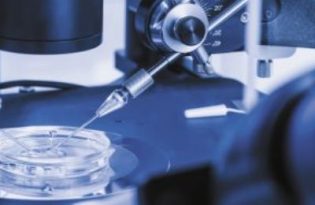
Pre-Implantation Genetic Diagnosis (PGD)
Contact us regarding PGD today
Embryo Genetic Testing can be performed through a process called Pre-implantation Genetic Diagnosis (PGD). This is a diagnosis testing option for couples at increased risk of passing on a chromosomal abnormality or specific genetic disorder on to their children. Couples choose PGD for many reasons, including minimising the risk of passing on a genetic disease to any offspring.
What is involved?
Patients are required to undergo a standard round of IVF. This is where the woman’s ovaries are stimulated through medication to increase the number of follicles that may contain an egg. Over the course of approximately 10 days she is monitored with blood tests and scans to track follicle development. Under sedation the eggs are collected, and later that day fertilised using the male partner’s sperm. Over the course of five days the egg and sperm are monitored to watch for fertilisation and development. For all those embryos that make it to a stage called Blastocyst on day five, they will be assessed for appropriateness for PDG.
PGD is where under microscope a very fine laser creates a little hole in the shell of the embryo and a small number of cells are removed from the embryo. These cells are taken from a part of the embryo that goes on to form the placenta. At this we cryopreserve the embryo until the results from the testing are made available. These biopsied cells are then used to identify if the embryo contains the gene that may go on to carry a genetic condition.
Once the results are made available and if an embryo is found to NOT contain the gene, the woman will under go a Frozen Embryo Transfer whereby her natural menstrual cycle is monitored and at the appropriate time the embryo is thawed and transferred into her uterus via thin plastic catheter under ultrasound guidance. This procedure is similar to a pap smear. It is hopeful that the embryo will go onto implant and develop into a healthy baby. If additional embryos were found to be clear from containing the gene the process can be repeated until a pregnancy occurs, or if pregnant, can be done at a later time to achieve siblings.
Karyomapping
Karyomapping is a single gene Pre Implantation Genetic Diagnosis test available at Fertility Tasmania. Karyomapping is suitable for patients with a family history of a single gene disorder who are at risk of producing embryos that are affected by that single gene disorder.
What are the benefits of Karyomapping?
Karyomapping offers several significant benefits including:
- A significant reduction in the timeframe required to perform the test. As the testing is performed on a standardised platform, there is no need to tailor design a specific test for each couple. As a result, the lead in time for testing is only 2-4 weeks.
- Karyomapping has the potential to detect some chromosome abnormalities which may be associated with implantation failure, miscarriage, or abnormalities at birth. While the testing is not specifically designed to screen for chromosome abnormalities this does represent a significant improvement compared to the previous test used.
- Karyomapping is more cost effective. This testing is charged at $720 per biopsied embryo, with the fee capped at $2720 per PGD cycle. Feasibility test is $1700.





